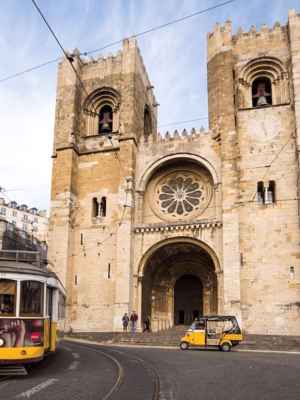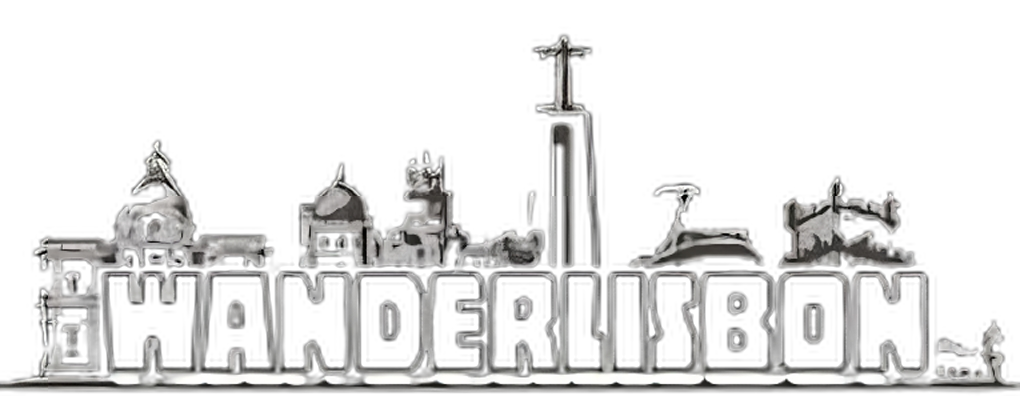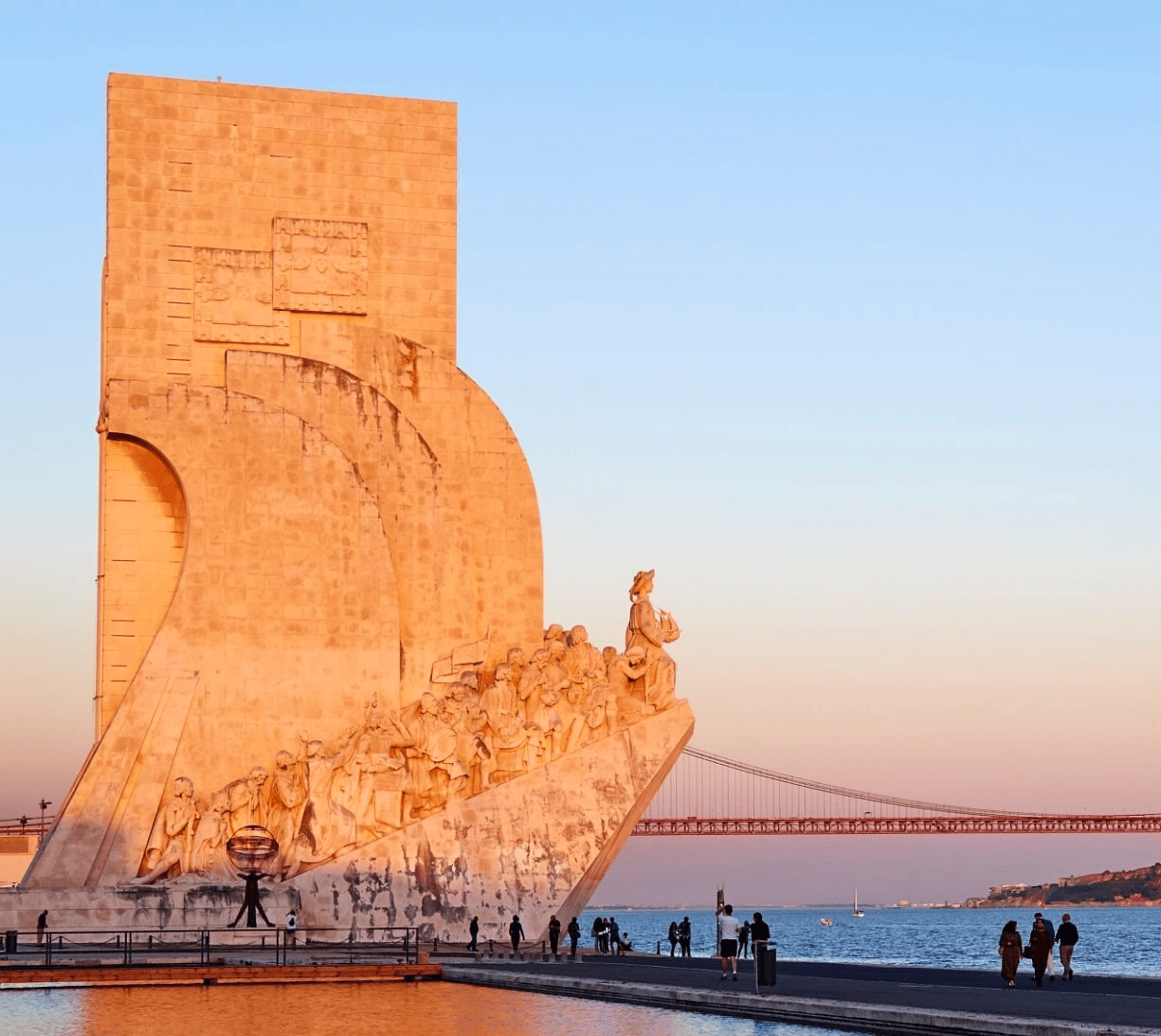



Touch each icon to get the information.
How to get there
Detailed instructions to help a tourist get from Praça do Comércio to the Belém Tower and the Monument to the Discoveries by bus:
1. Leave Praça do Comércio and walk towards the center of the square.
2. Head to the bus stop located on the southwest corner of the square, near the Rua Augusta arch.
3. Once at the bus stop, look for bus number 728, which will take you directly to the Belém Tower and the Monument to the Discoveries.
4. Make sure you have enough cash or a valid transport card to pay for the bus ticket. You can purchase it at the ticket counters or vending machines available at the nearby metro station.
5. When bus number 728 arrives at the bus stop in Praça do Comércio, board the bus and remember to validate your ticket at the validation machine upon boarding.
6. Once inside the bus, pay attention to the announcements and the upcoming stops. If you have any questions, feel free to ask the driver or fellow passengers.
7. When you reach the “Torre de Belém” bus stop, alight from the bus and make your way towards the Belém Tower, which will be a short distance away. You will see an impressive structure in front of you.
8. To reach the Monument to the Discoveries from the Belém Tower, walk towards the banks of the Tagus River. On your left, you will find the monument just a few meters away. You won’t be able to miss it as it is a striking caravel-shaped structure.
9. Enjoy your visit to the Belém Tower and the Monument to the Discoveries.
Scenario 1: Starting from the Blue Line (Linha Azul)
1. If you are starting from a station on the Blue Line, take the metro towards Santa Apolónia.
2. Get off at the Terreiro do Paço station.
3. Once at Terreiro do Paço, follow the signs to the Green Line (Linha Verde).
4. Take the metro towards Cais do Sodré.
5. Get off at the Cais do Sodré station.
6. From Cais do Sodré, follow the signs to the train station located inside the metro station.
7. Take the train on the Cascais Line (Linha de Cascais) heading towards Cascais.
8. Get off at the Belém station.
9. Exit the train station and walk towards the river. You will find the Belém Tower and the Monument to the Discoveries nearby.
Scenario 2: Starting from the Green Line (Linha Verde)
1. If you are starting from a station on the Green Line, take the metro towards Cais do Sodré.
2. Get off at the Cais do Sodré station.
3. From Cais do Sodré, follow the signs to the train station located inside the metro station.
4. Take the train on the Cascais Line heading towards Cascais.
5. Get off at the Belém station.
6. Exit the train station and walk towards the river. You will find the Belém Tower and the Monument to the Discoveries nearby.
Scenario 3: Starting from the Yellow Line (Linha Amarela)
1. If you are starting from a station on the Yellow Line, take the metro towards Rato.
2. Get off at the Rato station.
3. From Rato, transfer to the Blue Line (Linha Azul) towards Santa Apolónia.
4. Get off at the Terreiro do Paço station.
5. Once at Terreiro do Paço, follow the signs to the Green Line (Linha Verde).
6. Take the metro towards Cais do Sodré.
7. Get off at the Cais do Sodré station.
8. From Cais do Sodré, follow the signs to the train station located inside the metro station.
9. Take the train on the Cascais Line heading towards Cascais.
10. Get off at the Belém station.
11. Exit the train station and walk towards the river. You will find the Belém Tower and the Monument to the Discoveries nearby.
Please note that the metro and train schedules may vary, so it’s always a good idea to check the latest timetables and plan your journey accordingly.

Above in the photo gallery you will find the map in real size.
Detailed instructions on how to get to the Belém Tower and the Monument to the Discoveries using the train from Cais do Sodré station. Additionally, I will include information on how to reach Cais do Sodré station from Praça do Comércio using bus number 728 or the metro on the Green Line.
To reach Cais do Sodré station from Praça do Comércio, you have two options:
Option 1: Bus number 728
1. Head to the bus stop located at Praça do Comércio.
2. Board bus number 728 heading to Cais do Sodré.
3. Stay on the bus until you reach Cais do Sodré station.
Option 2: Metro (Green Line)
1. Head to the nearest metro station from Praça do Comércio.
2. Board the metro on the Green Line (towards Cais do Sodré).
3. Stay on the metro until you reach Cais do Sodré station.
Once you have reached Cais do Sodré station, follow these instructions to get to the Belém Tower and the Monument to the Discoveries using the train:
1. At Cais do Sodré station, look for signs and directions leading you to the Cascais train line.
2. Board the train heading to Cascais.
3. Stay on the train until you reach Belém station.
4. Upon arrival at Belém station, follow the signs and walk towards the Belém Tower or the Monument to the Discoveries. Both points of interest are just a few meters away from each other.
Remember to check the train schedules and have a valid ticket before boarding. If you have any questions during the journey, feel free to ask station staff for further information and confirmation of directions.
Explore the beauty of Santa Justa Elevator with ease!
Simply click on the ‘Take me to Santa Justa Elevator’ button below, and it will automatically open the Google Maps application on your mobile device or computer.
The starting location will already be configured, so you just need to follow the step-by-step directions provided by Google Maps. Enjoy a hassle-free stroll as you’re guided through the best routes to reach this iconic landmark in Lisbon. Exploring the city couldn’t be easier with the help of Google Maps!
Please make sure to add the appropriate button on your website with the necessary functionality to open the Google Maps application with the preconfigured location.
Once you arrive at the site, listen to a brief explanation of the history of the place.
- Audio in English
- Audio en français
- Audio en Español
- Audio auf Deutsch





Choose Your Language.
- Reading in English
- Lire en Français
- Lectura en Español
- Lesen auf Deutsch
This monument was built in 1960 to commemorate the 500th anniversary of the death of Prince Henry the Navigator, a key figure in Portuguese maritime discoveries. As many of you know, Portugal played a crucial role in the Age of Discoveries, when Portuguese navigators boldly ventured into the ocean in search of new trade routes and geographical knowledge.
The original design of the monument was led by architect Cottinelli Telmo and sculptor Leopoldo de Almeida. What you see before you is an impressive structure in the shape of a caravel, the type of ship used by Portuguese navigators at that time. It represents the spirit of exploration and audacity of those brave sailors.
At the prow of the caravel, you will find an imposing bronze statue representing Prince Henry the Navigator himself. It was he who propelled and sponsored many of the Portuguese maritime expeditions in the 15th century. On both sides of the caravel, you will see sculptures depicting other prominent explorers of the era, such as Vasco da Gama, Pedro Álvares Cabral, and Fernão de Magalhães (known as Ferdinand Magellan).
Throughout the years, the Monument to the Discoveries has witnessed several significant events. In 1985, when Portugal joined the European Community (nowadays the European Union), a ceremony was held here to celebrate this historical milestone. Additionally, in 1990, festivities took place at this location to commemorate the 500th anniversary of the discovery of Brazil by Pedro Álvares Cabral. It was a momentous occasion in the history of discoveries and marked the beginning of a new era of exploration and colonization in the Americas.
It is also important to mention that in the year 2000, during the Portuguese presidency of the European Union, a summit between the European Union and Latin America was held right here, at the Monument to the Discoveries. This event brought together Latin American and European leaders, symbolizing the importance of dialogue and collaboration between both continents.
I hope this brief introduction has provided you with an overview of the history and most relevant events related to this magnificent monument. I invite you to explore every detail of this structure, observe the sculptures, and reflect on the legacy of Portuguese maritime discoveries. Not only is it an impressive monument from an architectural standpoint, but it is also a window into a past filled with intrepid navigators who changed the course of history.
Ce monument a été construit en 1960 pour commémorer le 500e anniversaire de la mort du prince Henri le Navigateur, une figure clé des découvertes maritimes portugaises. Comme beaucoup le savent, le Portugal a joué un rôle crucial dans l’ère des découvertes, lorsque les navigateurs portugais se sont audacieusement aventurés dans l’océan à la recherche de nouvelles routes commerciales et de connaissances géographiques.
La conception originale du monument a été confiée à l’architecte Cottinelli Telmo et au sculpteur Leopoldo de Almeida. Ce que vous voyez devant vous est une structure impressionnante en forme de caravelle, le type de navire utilisé par les navigateurs portugais à l’époque. Elle représente l’esprit d’exploration et d’audace de ces courageux marins.
À la proue de la caravelle, vous trouverez une imposante statue en bronze représentant le prince Henri le Navigateur lui-même. C’est lui qui a encouragé et sponsorisé bon nombre des expéditions maritimes portugaises au XVe siècle. De chaque côté de la caravelle, vous verrez des sculptures représentant d’autres explorateurs éminents de l’époque, tels que Vasco de Gama, Pedro Álvares Cabral et Fernão de Magalhães (connu sous le nom de Ferdinand Magellan).
Au fil des ans, le Monument aux Découvreurs a été le témoin de plusieurs événements significatifs. En 1985, lorsque le Portugal a rejoint la Communauté européenne (aujourd’hui l’Union européenne), une cérémonie a eu lieu ici pour célébrer cette étape historique. De plus, en 1990, des festivités ont eu lieu en ce lieu pour commémorer les 500 ans de la découverte du Brésil par Pedro Álvares Cabral. Ce fut un moment crucial dans l’histoire des découvertes et marqua le début d’une nouvelle ère d’exploration et de colonisation en Amérique.
Il est également important de mentionner qu’en l’an 2000, lors de la présidence portugaise de l’Union européenne, un sommet entre l’Union européenne et l’Amérique latine a été organisé ici même, au Monument aux Découvreurs. Cet événement a réuni des dirigeants latino-américains et européens, symbolisant l’importance du dialogue et de la collaboration entre les deux continents.
J’espère que cette brève introduction vous a donné un aperçu de l’histoire et des événements les plus pertinents liés à ce magnifique monument. Je vous invite à explorer chaque détail de cette structure, à observer les sculptures et à réfléchir à l’héritage des découvertes maritimes portugaises. Ce n’est pas seulement un monument impressionnant d’un point de vue architectural, mais c’est aussi une fenêtre sur un passé rempli de navigateurs intrépides qui ont changé le cours de l’histoire.
Este monumento fue construido en 1960 para conmemorar el 500 aniversario de la muerte del príncipe Enrique el Navegante, una figura clave en los descubrimientos marítimos portugueses. Como muchos saben, Portugal desempeñó un papel crucial en la Era de los Descubrimientos, cuando los navegantes portugueses se aventuraron audazmente en el océano en busca de nuevas rutas comerciales y conocimiento geográfico.
El diseño original del monumento estuvo a cargo del arquitecto Cottinelli Telmo y del escultor Leopoldo de Almeida. Lo que ven ante ustedes es una estructura impresionante en forma de carabela, el tipo de barco utilizado por los navegantes portugueses en ese entonces. Representa el espíritu de exploración y audacia de aquellos valientes marineros.
En la proa de la carabela, encontrarán una imponente estatua de bronce que representa al propio príncipe Enrique el Navegante. Fue él quien impulsó y patrocinó muchas de las expediciones marítimas portuguesas en el siglo XV. A ambos lados de la carabela, verán esculturas que representan a otros exploradores destacados de la época, como Vasco da Gama, Pedro Álvares Cabral y Fernão de Magalhães (conocido como Fernando de Magallanes).
A lo largo de los años, el Monumento a los Descubridores ha sido testigo de varios eventos significativos. En 1985, cuando Portugal se unió a la Comunidad Europea (hoy en día la Unión Europea), se llevó a cabo una ceremonia aquí para celebrar este hito histórico. Además, en 1990, se realizaron festividades en este lugar para conmemorar los 500 años del descubrimiento de Brasil por parte de Pedro Álvares Cabral. Fue un momento trascendental en la historia de los descubrimientos y marcó el inicio de una nueva era de exploración y colonización en América.
También es importante mencionar que en el año 2000, durante la presidencia portuguesa de la Unión Europea, se celebró una cumbre entre la Unión Europea y América Latina aquí mismo, en el Monumento a los Descubridores. Este evento reunió a líderes latinoamericanos y europeos, simbolizando la importancia del diálogo y la colaboración entre ambos continentes.
Espero que esta breve introducción les haya brindado una visión general de la historia y los sucesos más relevantes relacionados con este magnífico monumento. Les invito a que exploren cada detalle de esta estructura, observen las esculturas y reflexionen sobre el legado de los descubrimientos marítimos portugueses. No solo es un monumento impresionante desde el punto de vista arquitectónico, sino también una ventana a un pasado lleno de intrépidos navegantes que cambiaron el curso de la historia.
Dieses Denkmal wurde im Jahr 1960 erbaut, um den 500. Todestag von Prinz Heinrich dem Seefahrer zu gedenken, einer Schlüsselfigur der portugiesischen Seefahrterei. Wie viele von Ihnen wissen, spielte Portugal eine entscheidende Rolle im Zeitalter der Entdeckungen, als portugiesische Seefahrer kühn in den Ozean aufbrachen, um neue Handelsrouten und geographisches Wissen zu suchen.
Das ursprüngliche Design des Denkmals wurde vom Architekten Cottinelli Telmo und dem Bildhauer Leopoldo de Almeida gestaltet. Was Sie hier sehen, ist eine beeindruckende Struktur in Form einer Karavelle, dem Schiffstyp, den die portugiesischen Seefahrer damals verwendeten. Sie repräsentiert den Geist der Entdeckung und Wagemut dieser tapferen Seemänner.
An der Bugspitze der Karavelle finden Sie eine imposante Bronzestatue, die den Prinzen Heinrich den Seefahrer darstellt. Er war es, der viele der portugiesischen Seefahrtsexpeditionen im 15. Jahrhundert vorantrieb und finanzierte. Auf beiden Seiten der Karavelle sehen Sie Skulpturen, die andere bedeutende Entdecker dieser Zeit darstellen, wie Vasco da Gama, Pedro Álvares Cabral und Fernão de Magalhães (bekannt als Ferdinand Magellan).
Im Laufe der Jahre hat das Denkmal der Entdecker mehrere bedeutende Ereignisse miterlebt. Im Jahr 1985 fand hier eine Zeremonie statt, um den historischen Meilenstein des Beitritts Portugals zur Europäischen Gemeinschaft (heute Europäische Union) zu feiern. Darüber hinaus wurden im Jahr 1990 an diesem Ort Feierlichkeiten abgehalten, um die 500-jährige Entdeckung Brasiliens durch Pedro Álvares Cabral zu würdigen. Dies war ein bedeutsamer Moment in der Geschichte der Entdeckungen und markierte den Beginn einer neuen Ära der Erkundung und Kolonisierung in Amerika.
Es ist auch wichtig zu erwähnen, dass im Jahr 2000 während der portugiesischen EU-Ratspräsidentschaft ein Gipfeltreffen zwischen der Europäischen Union und Lateinamerika genau hier, am Denkmal der Entdecker, stattfand. Diese Veranstaltung brachte lateinamerikanische und europäische Führungspersönlichkeiten zusammen und symbolisierte die Bedeutung des Dialogs und der Zusammenarbeit zwischen beiden Kontinenten.
Ich hoffe, diese kurze Einführung hat Ihnen einen Überblick über die Geschichte und die relevantesten Ereignisse rund um dieses großartige Denkmal gegeben. Ich lade Sie ein, jedes Detail dieser Struktur zu erkunden, die Skulpturen zu betrachten und über das Erbe der portugiesischen Seefahrtsentdeckungen nachzudenken. Dieses Denkmal ist nicht nur architektonisch beeindruckend, sondern auch ein Fenster in eine Vergangenheit voller furchtloser Seefahrer, die den Lauf der Geschichte verändert haben.
Closest Nearby Destination: Discover the Next Stop from Here
Jerónimos Monastery: Exploring Lisbon’s Majestic UNESCO Heritage Site And Spiritual Haven
Related products
-

Cabo da Roca: Embracing Europe’s Westernmost Point and Nature’s Majestic Edge
-

Cathedral of Lisbon Unveiled: Discover the Majesty of Lisbon’s Spiritual Gem
-

Portas do Sol Viewpoint: Breathtaking Views of Lisbon
-

Jerónimos Monastery: Exploring Lisbon’s Majestic UNESCO Heritage Site and Spiritual Haven
- Lisboa, Architecture, Historic Sites, Historical Monuments, Landmarks, Museums and Art Galleries, Places






Reviews
There are no reviews yet.